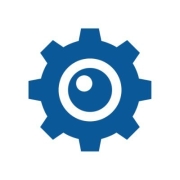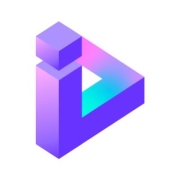SaaS Security Posture Management (SSPM) tools help organizations secure their SaaS applications by identifying and minimizing security risks, aligning configurations and compliance with security policies.
Focusing on securing SaaS products, SSPM solutions provide continuous monitoring to detect misconfigurations and compliance issues. They enable businesses to establish a baseline for SaaS application security to protect sensitive data while maintaining operational integrity. By offering real-time insights, these tools facilitate the proactive management of potential threats, ensuring that security measures are up-to-date and effective in response to evolving cyber risks.
What are the critical features of these solutions?In sectors like finance and healthcare, SSPM is instrumental in safeguarding sensitive client data. These industries face strict regulatory requirements, making compliance management a critical component of any security strategy. SSPM ensures that organizations can meet these demands by providing thorough monitoring and documentation capabilities.
SSPM is beneficial for organizations as it simplifies the complexity of managing security for multiple SaaS applications. By providing a centralized solution for monitoring and maintaining security compliance, businesses can effectively protect their assets and reduce the likelihood of cyber threats.
| Product | Market Share (%) |
|---|---|
| AppOmni | 17.8% |
| Obsidian CDR Platform | 12.6% |
| Adaptive Shield | 9.7% |
| Other | 59.900000000000006% |






























SaaS security posture management (SSPM) is a continuous process of adapting and improvising your cloud security endeavors to reduce the chances of a malicious attack. The constant monitoring process oversees SaaS app environments to determine the measurable difference between the standard security policy and the actual security posture.
Most organizations utilize SaaS software for their ecosystem, which often makes it difficult for the IT team to keep track of the organization’s security risk profile. Using a SaaS security posture management solution will allow your organization to make use of automated real-time remediation of misconfiguration, will offer you compliance with common standards such as HIPAA and NIST 800-53, and will provide visibility into the plethora of SaaS apps for probable policy violations.
While a CASB (cloud access security broker) is primarily used for risk assessment, e-discovery, and establishing audit trails, an SSPM is primarily used for strengthening security posture. SSPMs aim to manage and assess the security risk and posture of SaaS applications to prevent attacks and configuration errors. In contrast, CASBs focus on security gaps at the core of a SaaS layer and are primarily reactive, concentrating on detection of breaches once they have occurred. In other words, the relation between CASBs and SSPMs is that an SSPM supplements the enforcement capabilities of a CASB.
SSPM provides a comprehensive approach to managing risks associated with cloud applications by continuously monitoring configurations and user activities. It helps you identify vulnerabilities, enforce security policies, and ensure compliance with industry regulations. By integrating SSPM into your security strategy, you can strengthen your cloud security posture, minimize potential threats, and mitigate the risk of data breaches.
What features should you look for in an SSPM solution?When evaluating SSPM solutions, prioritize features like continuous monitoring, real-time alerts, automated compliance reporting, and user behavior analytics. Ensure the solution offers detailed visibility into application configurations and supports integration with your existing security tools. Effective SSPM solutions also provide intuitive dashboards and actionable insights to help you make informed decisions regarding your SaaS environments.
How does SSPM differ from CASB?While both SSPM and CASB aim to secure cloud applications, SSPM focuses on the security posture of SaaS configurations, ensuring they are optimized and compliant with security standards. CASB solutions primarily focus on enforcing security policies, such as data loss prevention and identity management. SSPM complements CASB by providing insight into potential misconfigurations and vulnerabilities within SaaS applications, allowing for more comprehensive cloud security management.
Why is continuous monitoring important in SSPM?Continuous monitoring is crucial in SSPM as it helps you detect and respond to potential security threats in real-time. Cloud environments are dynamic, with frequent changes in configurations and user behaviors, making it vital to have an ongoing assessment of your security posture. Continuous monitoring enables proactive identification of risks, reducing the window of opportunity for attackers and improving your SaaS security resilience.
Can SSPM help with regulatory compliance?SSPM plays a pivotal role in maintaining regulatory compliance by providing visibility into the configuration of your SaaS applications and ensuring they meet industry standards. It helps you generate automated compliance reports, track security posture changes over time, and implement controls required by regulations like GDPR, HIPAA, and PCI DSS. SSPM solutions streamline the compliance process, reducing manual effort and minimizing the risk of non-compliance penalties.